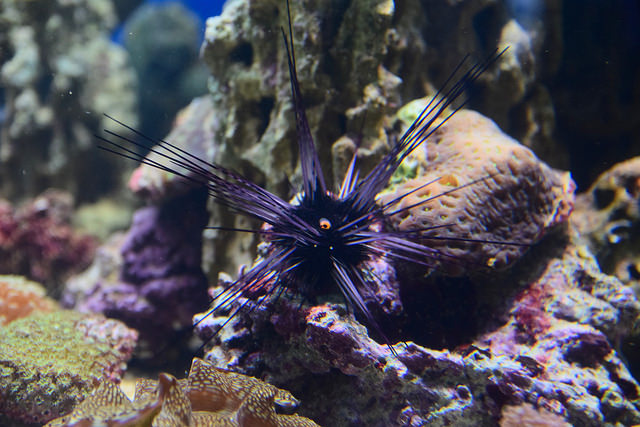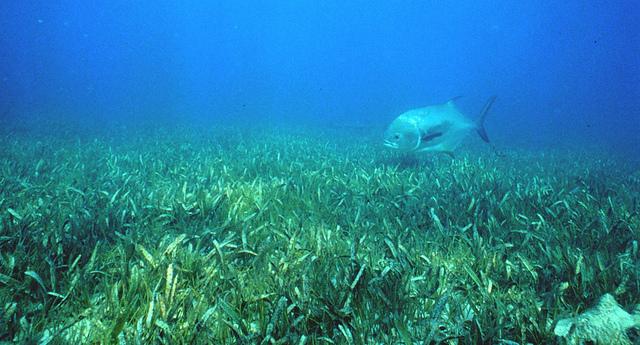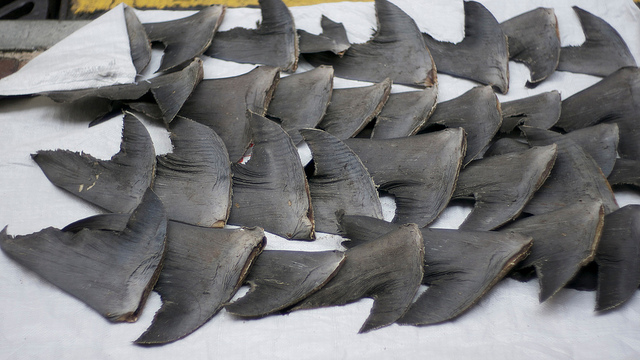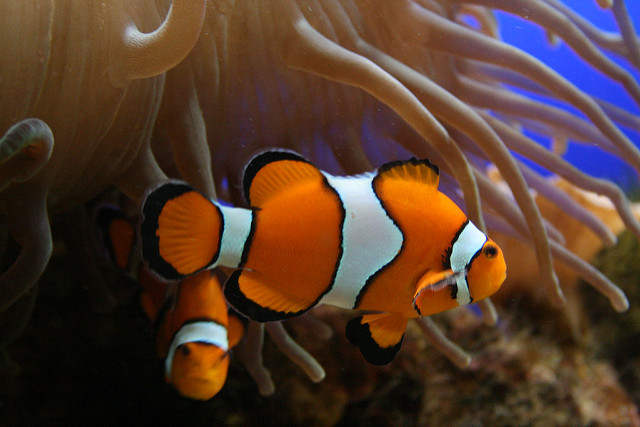
Our relationship with the world’s oceans is both complex and unyielding – after all, the oceans are where we first originated from. Today, we are dependent on the oceans for climate regulation, food, transportation, medicine, revenue and recreation. However, despite the importance of the oceans’ well-being – and the species that roam them – sustaining the world’s largest ecosystem is proving to be our most challenging feat.
As a result of its extraordinary size and depth, the oceans were seemingly seen as a source of infinite resources. However, in reality, centuries of exploitation and neglect have depleted and damaged our oceans to a near unsustainable level. The biodiversity and vitality of marine species provide us with clear examples of the devastating effects human activity has on our oceans.
Around 50 percent of species across land, rivers and seas have been lost in the last 40-years as a result of habitat loss and unsustainable hunting, according to a WWF analysis. In actuality, this percentage is believed to be higher, as many of the Earth’s species have still yet to be discovered by science. In addition, as data collection on marine species is often difficult to gather, we are unable to determine the full extent of the effects of human activity on ocean ecosystems and biodiversity. However, using the available data, experts estimate the rapid loss of species is between 1,000 and 10,000 times higher than the natural extinction rate, which could be devastating to our future existence on this planet.
Unfortunately, as there have been no major indications that our species will cease to continue exploiting our oceans, it is likely we will reduce our oceans into a lifeless blue desert. According to a 2015 study, ‘Marine defaunation: Animal loss in the global ocean’, if we continue on our current path, the loss of animal species from the planet’s oceans is expected to “rapidly intensify.”
“We may be sitting on a precipice of a major extinction event,” ecologist Douglas J. McCauley, of the University of California, Santa Barbara and a co-author of the study, told the New York Times, referring to marine life.
In order to grasp an understanding of the effects human activity has on ocean wildlife vitality, we will be exploring the cases of individual marine – and marine dependent – species affected by unsustainable trade, habitat loss and climate change, as part of our Anthropocene series.
Habitat loss
Habitat loss and destruction, which is believed to be the greatest threat to the vitality of life on this planet, threatens the future of every ocean ecosystem. The most well-known examples of habitat loss include coral reefs, which are home to 25 percent of the oceans’ species, and the Arctic sea ice, which is home to the largest bear on Earth, the polar bear.
The loss of Seagrasses, however, is a lesser known example of habitat loss, despite its importance as a hub for biodiversity. This vast biomass provides food, habitat, and nursery areas for a myriad of adult and juvenile vertebrates and invertebrates, making them a vital component to flourishing ecosystems around the world.

Seagrasses are found in shallow, salty and brackish waters in many parts of the world – from the tropics to the Arctic Circle -and are home to an incalculable abundance of species. In fact, a single acre of seagrass may support as many as 40,000 fish, and 50 million small invertebrates.
However, in the last 100 years, seagrass coverage has declined by 30 percent due to a combination of direct – habitat alteration (dredging, reclamation and coastal construction), the use of certain types of fishing gear and the introduction of exotic species – and indirect – climate change and pollution – human activity. As a result, populations of fish living in seagrass habitats declined by more than 70 percent from 1970 to 2010.
Initiating management and protection programs that restrict human activity, such as marine protected areas and individual conservation efforts, are believed to be our best hope of preserving seagrasses across the world. For example, in the summer of 2017, the Biotherm Water Lovers x Mission Blue expedition is set to survey the seagrass beds around the island of Formentera, where seagrass beds are under threat from anchoring motor yachts. The expedition team plans to work with local partners to address these impacts and create a short film that will be shared on social media to raise awareness.

Unsustainable trade
Every year, humans kill an estimated 100 million sharks. Despite their reputation – which is a result of Hollywood films and deceiving media coverage – sharks and other predators play an important role in the ecosystem.
Unsustainable trade, driven by the increasing demand for shark fin dishes, is pushing many species of shark to the brink of extinction. In fact, because they have high monetary and cultural value, many fishermen are using a practice called shark finning. As part of this practice, fishermen slice off the shark fins before discarding the rest of the still-living body into the ocean. As the shark is no longer able to swim, it slowly sinks to the bottom of the ocean, where it is eaten alive by other fish.

The Whale Shark, in particular, is a key example of the devastating effects of human activity. This gentle giant, the world’s largest living fish, is being driven to extinction by a combination of finning and other hunting practices, such as by-catch and tourism.
Whale sharks are highly valued on international markets, making them prime targets for fishermen looking to sell whale shark meat, fins or oil. However, even when the whale shark is not being targeted, they can often become victims of bycatch, which refers to the accidental capture of non-target species in fishing gear.
Finally, due to their extraordinary size – whale sharks can reach a length of 40 feet (12.2 meters) – they are also prime tourist attractions. This presents a threat to the species as it can interrupt their feeding, and sharks can be injured by boat propellers.
Experts estimate that the global whale shark population has declined by more than 50 percent over the last 75 years. In February, TRAFFIC, WWF, Shark Advocates International, Shark Trust and the Wildlife Conservation Society launched Global Priorities for Conserving Sharks and Rays: A 2015-2025 Strategy, in conjunction with a Convention on Migratory Species (CMS) conference on shark conservation in San José, Costa Rica.
The ten-year strategy aims to tackle the trade by “taking into account the highly complex trade routes for different shark and ray products and the fact that different products – meat, fins, liver oil, gill plates, and others – have very different markets,” reports the Maritime Executive.
Climate Change
Climate change, one of the biggest plights the ocean faces today, is changing the very structure and the way our oceans function. We know about the indirect effects it has on marine species through habitat degradation, but what about the direct effects?

Many fish species are able to adapt under pressure, for example the common clownfish, have been seen to withstand the lowering Ph levels and are generally considered quite the resilient species. Unfortunately, there are those that are not as resilient as clownfish.
It’s predominantly the invertebrates that suffer from these direct effects of climate change, and one in particular has suffered a devastating loss. We’re talking about the long-spined sea urchins, a species that has nearly entirely vanished from the Caribbean. This is not just a case of a few individuals washing ashore – over 90 percent of the population, approximately 700 million tons of long-spined urchins have perished.
The importance of this urchin species was to regulate and control micro and macro-algae populations. Algae, being in direct competition with coral for growth, is being given the opportunity to thrive without little worry for predation, permanently and negatively changing coral reef food webs.

According to research published in a 2015 edition of Proceedings of the National Academy of Sciences, such die-offs are on the rise in a multitude of species across the globe. The study reviewed 727 mass die-off records since the 1940’s and found that over time, these events are happening more frequently in marine invertebrate and fish species. It is still unclear of what could be causing this, but many scientists agree that all evidence points to climate change related effects.
It’s clear that to date, little research has been done on the topic. The study suggests that the lack of scientist coordination and collaboration is the reason why this has slipped passed our eyes. There needs to be new (and more) approaches to monitoring these events, to make educated predictions and prevent them from happening in the future.
In the final installment of our Anthropocene series, we will explore and evaluate the impacts of human activity on the extinction and endangerment rates of river species. In addition, we will also observe current and future solutions aimed at preserving the Earth’s biodiversity.
You want to support Anonymous Independent & Investigative News? Please, follow us on Twitter: Follow @AnonymousNewsHQ
This article ((Investigative) Ocean Wildlife Vitality: Marine Species Worldwide are Rapidly Declining Due to Human Activity) is a free and open source. You have permission to republish this article under a Creative Commons license with attribution to the author and AnonHQ.com.





it has to change from one day to another. do not believe in mass extinctions, please. who knows yesterday existed? i do not believe in layers of mass extinction because that is not sufficient nor explains everything. animals under the ocean would still survive to ice age and asteroids. and if you see the water is still here, so water survives, animals too. and asteroids must be rare, by localization population, there might be one to 30 asteroids that changed the surface appearance of this planet. do not believe in mass extinction. where are all humans since back then? they could have become water beings. see? do not believe in mass extinction.
things have to change fast in way to heal protect repair regenerate life and things. ‘human activity’ is from consumerism. so change human activity to not use at all transformed nature and composed transformed nature, use alternatives instead, recicle everything and organize by chemical components and even processes of recycling and transformation. the problem is capitalism conformism consumerism money system. no one can be behind a system that is just to explore from injecting goods, polluting, cheating and distrcting minds from nature. so as long as you leave the system by any link you’ll be good.
easter egg for 5th november: i created and developed the anonymous idea because it was a good idea it is like a society where people can talk with each others about what really matters. and anonymous is a lack of identity for the system in which helps you preserve your identity and self to ‘give’ yourself to listen and help other selves. protecting the self was a step to help the ideology and concept to help others reliable and protected from the system.
uhuuuuh ;P
good news or articles would be welcome in the site. more happiness and equilibrium between articles would be good. good mood is good for your site and visitors. https://www.youtube.com/watch?v=Ue9DyRhtXMA
thanks!